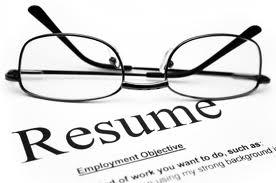
HR Practices: How to Screen Resumes
Over the next few months we will be featuring a How To series on common HR and recruiting practices that can help with your preparation an improve efficiencies in your hiring practices.
Our first topic is around the potentially time consuming, yet necessary task of screening candidate resumes. In the Digital age there are various ways in which resumes are being prepared and communicated. For example, you may be receiving resumes in the form of:
• Traditional hard copy (paper copies)
• Email attachments
• Videos
• LinkedIn profiles
• USB devices
The How To tips pertain to the first two communication methods above: hard copy or digital copy. Depending on your business you may receive a handful of resumes or you may receive hundreds of resumes for a posted position. This may impact the amount of time you will have to review resumes. A few years back, an eye tracking study was conducted which stated that some recruiters may spend as little as six seconds reviewing an individual resume. While your screening process may not be that quick, the following tips can assist you in being more efficient in reviewing applicant resumes.
How to Screen Resumes

1. Scan the resume to obtain an overall impression
2. Review the applicants’ expectation or objective statement to see if it aligns with the position you are looking to fill.
3. Review the Experience/Qualifications portion of the resume – if this section of the resume lacks critical core or required skills, the resume can be placed into a “maybe” or “also ran” pile or electronic folder.
4. Look for specific commentary that makes the candidate stand out – whether in the cover letter or resume itself, does the candidate include specific statements as to why they would be best for the job? Or are the comments more generic? Are they using relevant keywords that describe the position or their experience?
5. Review the most recent experience – are there applicable skills that standout?
6. Review any gaps in experience – are there extended gaps within the experience section? You may need to probe further to determine why these gaps exist.
7. Review accomplishments and accolades
8. Compare the resume to your posted job description – does the resume check off your main requirements?
9. Divide resumes into 3 classifications – place resumes into three piles/folders based on:
a. Not a fit at this time
b. Potential candidate
c. Strong candidate
10. Create a shortlist of strong candidates
Once you have generated your shortlist you can proceed with additional screening, scheduling phone interviews, video interviews or in-person meetings. It is recommended that you retain resumes on file for a set period in case other positions become available or if there were candidates that you may want to reach out in the future.
The screening process can be as elaborate as you need it to be, however the more resumes you review the more efficient your screening process will become.
Need assistance with your recruiting or staffing efforts in the Okanagan? Contact us today to set up a consultation. Speak with one of our experienced HR consultants and begin preparing for your 2018 staffing needs today!
